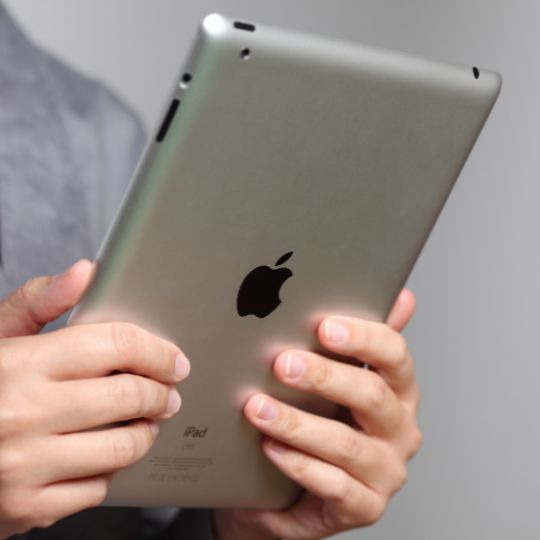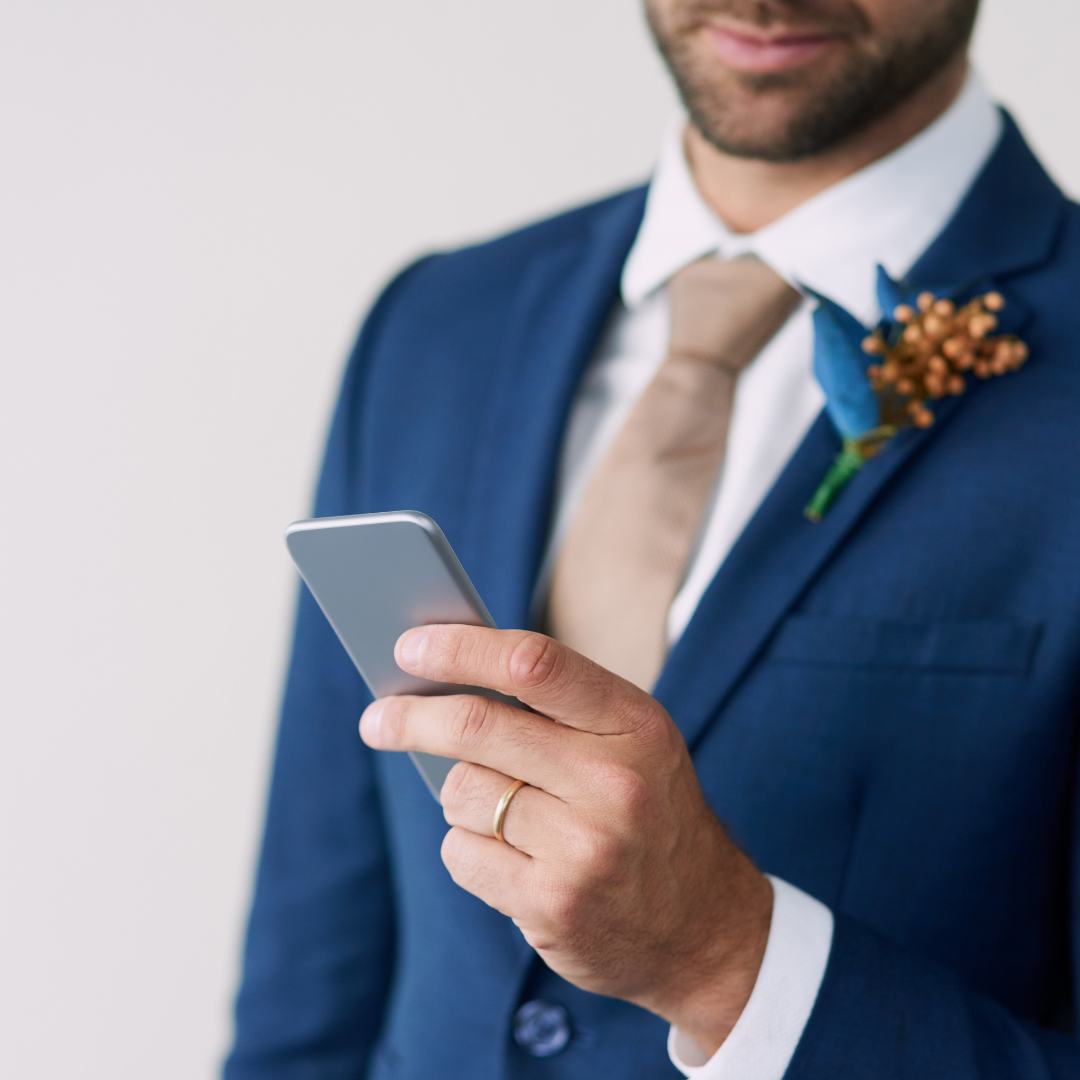The Benefits of Staying
Low-Tech for Your Wedding Ceremony
Categories: | Wedding Legals| Wedding Planning |
 Is going
paperless, or nearly paperless, for your
wedding ceremony a good idea?
Is going
paperless, or nearly paperless, for your
wedding ceremony a good idea?In recent years, the use of tablets and smartphones in weddings has grown exponentially. Almost everyone, from schoolkids to seniors, has at least one for personal use, and they are ubiquitous in the workplace.
So, logical progression, celebrants have started using these digital devices to read the ceremony and sign necessary paperwork, and couples may well read their vows, and their speeches, from their phones.
This trend is promoted as eco-friendly, practical, and efficient as it removes the need for printing copies of the ceremony and paperwork.
Using devices for signing marriage certificates and reading the ceremony can offer several benefits. However, there are also some drawbacks. These drawbacks, in my view, not only far outweigh the assumed or perceived benefits environmental benefits, they include a significant emotional element.
Pen
vs Device: The
Tangible Joy
of Signing
your Marriage
Certificate
Add
The
way you sign your marriage certificates has a
significant impact on the emotional and
sensual pleasure of the experience! The
silkiness of good paper under your hands, the
smooth flow of ink on paper that creates a
sense of intimacy of of permanence, adds an
extra layer of significance and tradition to
the act of signing, and can create a subtle
feeling of tangible joy and sensous pleasure
that can't be duplicated by a stylus on a
device screen.
Pen
vs Device: The
Tangible Joy
of Signing
your Marriage
Certificate
Signing on a device is pretty mundane. It is how we confirm deliveries. It is impersonal. As signing on paper becomes a rarer experience, one not often experienced in normal daily life, doing so becomes more significant.
From a practical point of view, the Marriage Act requires that each marrying couple is handed the Presentation Certificate at the conclusion of their marriage ceremony. This means that has to be a paper certificate. If you must sign one piece of paper, why complicate the signing by using two different methods?
Digital
signatures are
horrible!
Add
When signing with a stylus, the
resulting signature may not resemble our usual
handwriting. This is due to the different feel
and texture of the stylus on a screen compared
to a pen on paper. Additionally, the angle and
pressure at which the stylus is held may
affect the appearance of the signature.
Digital
signatures are
horrible!
If you are going to sign on a device you really need to practice your signature using the same type of device and the same type of stylus, and each of you may need different adjustments to settings such as pen pressure.
Reason
for the order
of signing
Add
If you pay close attention at one of
my weddings, you will notice that I get the
couple and their witnesses to sign in a
particular order.
Reason
for the order
of signing
Signing three times, on paper, gives you a chance to deal with the impact of slightly shaking hands (nervous excitement), so that when it comes to signing for the third time, you've settled down and your signature looks confident and "normal". Which is why I get you to sign the copy I have to keep first (the Register), then the copy that goes into Births, Deaths, and Marriages, and lastly, the Presentation Certificate, the one you keep for the rest of your lives.
It's a smooth operation. Throw a digital device into the mix and it becomes a more bumpy ride.
Risk
Management
Add
Risk
Management
One of the biggest concerns is the possibility of the electronic device failing or running out of battery, preventing access to the ceremony script and certificates. But issues of security, the possibility of the device being hacked, or the document being corrupted also pose a level of risk that is concerning.
Most celebrants who use devices have an alternative in case of connectivity issues - a printed copy of the ceremony script and certificates!
A
matter of
gravitas - how
real will it
feel
Addimm
A
matter of
gravitas - how
real will it
feel
At a wedding we do things differently for the simple reason that it is a day, and an experience, that we set apart from our normal every day lives. You dress up. You wear clothes that send a very strong signal. Everyone acts with greater formality. There is both excitement and solemnity.
We are so used to seeing people with heads buried in their phones, ignoring others, even in social
 situations, that seeing
someone reading from a device during your wedding
will send a mixed message at best. A visual jolt, in
a way. And, While signing marriage documents
on a device may seem like a convenient and efficient
way of signing, that also lacks a certain amount of
gravitas.
situations, that seeing
someone reading from a device during your wedding
will send a mixed message at best. A visual jolt, in
a way. And, While signing marriage documents
on a device may seem like a convenient and efficient
way of signing, that also lacks a certain amount of
gravitas.The act of signing the marriage certificates
is legally required and culturally and
emotionally significant. So much so that many
marrying couples believe that they aren't
married until the certificates are signed[1].
Unlike virtually all other legal documents,
such as a will, where the witnesses are
witnessing the signature, the marriage
certificates include the signature of the
person solemnising the marriage, and all
parties - the marrying couple, their
witnesses, and the celebrant, are attesting
that the marriage took place, not witnessing
the couple's signatures. That alone makes this
signing a unique experience, a recognition
that the marriage is both official and
permanent. Signing with a pen on paper adds a
certain level of formality and significance to
the act which signing on a device may lack.
How
it looks in
photos
Add
How
it looks in
photos
It's a common sight at events these days - the celebrant reading from their phone or tablet, or a couple signing their marriage certificate on a tablet. But let's be real, it doesn't always look great in photos. The glare on the screen, awkward positioning, and the absence of a physical document to hold can detract from the overall visual appeal of the event. Add to that the challenges your photographer may face when trying to capture a good shot due to limitations on where they can stand or the angles they can take.
Thanks for reading!
